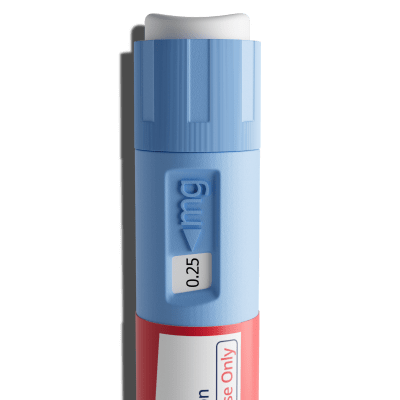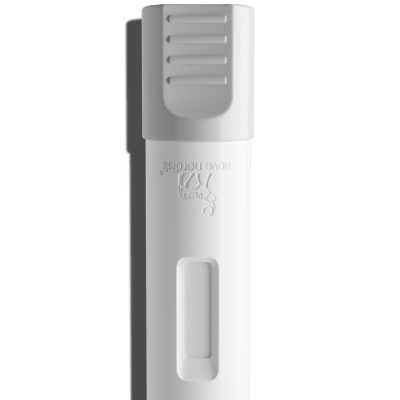Content
View weight loss medications
How Much Body Fat Can You Lose in a Month?

When you decide you want to lose fat, it’s normal to want to see results STAT. But that’s not the way fat loss — or anything, really — works.
Good things in life take time, but how much time are we talking about exactly? How much body fat can you lose in a month?
Unfortunately, we can’t give you a solid answer there. The amount of body fat you can lose in a month depends on many factors, including how much body fat you have to begin with, your diet and exercise habits, and your genetics.
When it comes to general weight loss, the guidance is to aim for one to two pounds of weight loss per week.
Below, we dive more into how much body fat you can lose in a month, explore how to set a realistic goal, and share tips on how to safely lose body fat.
Content
There’s no set amount of body fat you can lose in a month. When it comes to general weight loss, the CDC (Centers for Disease Control and Prevention), recommends aiming for one to two pounds of weight loss per week. That would be equal to losing about four to eight pounds per month.
It may be possible to lose weight quicker than this, but it’s safer to lose weight with a slow and steady approach. This also may make it more likely you’ll keep the weight off.
How much body fat you can lose in a month depends on a variety of factors, including:
Your current body composition (how much muscle and fat you have)
Your genetics
Your diet
Your exercise routine
Lifestyle factors — such as how much sleep you get or your stress levels
If you have any health conditions
If you’re taking any medication
Just like with weight, your best bet is to lose body fat slowly.
Weight loss, explained
How to Set a Weight Loss Goal
Losing body fat can be hard enough, but doing it without a goal in mind can make it even trickier.
Research shows that setting a weight loss goal can make you more likely to lose significant amounts of weight.
What should your body fat goal be? Well, there’s a bit of debate around what a healthy body fat percentage looks like.
Generally, a body fat percentage of 25 percent or more for men is classified as obesity. So, if your body fat percentage is 25 percent or more, you might want to work toward lowering your body fat percentage below this threshold.
A healthcare provider can talk you through what a healthy body fat percentage would be for you — it’ll probably be a range.
Beyond this, you can’t really measure your body fat from home. You’ll need a healthcare provider and special equipment to find out how much body fat you have exactly.
So, depending on your goals, it might be more beneficial to set a weight loss goal, a body mass index (BMI) goal, or another fitness goal, such as putting on more muscle.
BMI can act as an indicator of how much body fat you have. BMI is worked out by dividing your weight in kilograms by the square of your height in meters.
Bad at math? We got you. Check out the Hims BMI Calculator.
In imperial speak, the formula is your weight in pounds divided by your height in inches squared and then multiplied by 703.
Here are the categories for BMI:
Underweight: BMI less than 18.5
Healthy weight: BMI 18.5 to 24.9
Overweight: BMI 25 to 29.9
Obesity: BMI of 30 or more
A quick FYI: If you’re setting a weight loss goal, the number on the scale doesn’t tell the full story. It doesn’t tell you how much body fat you have, but rather how much you weigh in total — including your muscle mass. The more muscle you build, the more you’ll weigh and the higher your BMI will be.
BMI doesn’t tell the full story when it comes to your health, either. It’s also not a direct measure of body fat. Two people could have the same BMI, but different amounts of body fat. Again, a healthcare provider can help you set a realistic weight loss or BMI goal for you.
When deciding how much weight you’ll aim to lose, keep in mind the guidance of losing one to two pounds of weight a week — or four to eight pounds a month.
Here are some tips when setting a fat loss or weight loss goal:
Give yourself a realistic timeline. Fat loss is a slow and steady process and you might not see progress every week, or even every month. Give your body plenty of time to lose fat safely and sustainably.
Break down your goal. It can be intimidating if you’re trying to lose a lot of fat. Try breaking down your overall goal into manageable monthly milestones — and try saying that five times fast.
Set goals that have nothing to do with fat loss. There’s a lot we can’t control when it comes to fat loss (looking at you, genetics). But we can, for the most part, control our lifestyles. Try setting goals that you can control, like “strength train twice a week” or “add a protein source to every meal.” These goals will help you lose fat and build muscle.
Weight loss treatment for where you are now
How to Safely Lose Body Fat
Rapid weight loss or fat loss isn’t always safe, and you may find it leads to weight gain down the line if you’re following an unsustainable lifestyle.
Here’s how to safely lose body fat month after month:
Eat Nutritious Foods
Nutritious foods are the cornerstone of any fat loss plan.
To lose fat, you’ll want to be in a calorie deficit. This means you’re eating fewer calories than your body needs.
You don’t necessarily need to count calories to make this happen, though. Opting for nutritious foods and tweaking your eating habits can naturally put you in a calorie deficit.
Add these foods to your grocery list:
Fruits and vegetables
Nuts and seeds
Lean meats and fish
Legumes like lentils, chickpeas, and beans
Low-fat or fat-free dairy products
Whole grains like brown rice, whole-wheat bread, and quinoa
FYI: Be wary of any weight loss supplements that promise to speed up fat-burning or block carbs. They’re not always safe, let alone effective.
Eat More Protein
Protein isn’t just for gains — although it’ll certainly help you maintain and build muscle.
Eating more protein can help you feel fuller, and a higher protein intake has been linked to a lower body weight, reduced fat mass, and the preservation of fat-free mass, like muscle.
Good protein sources include:
Lean meats like chicken and turkey
Fish like salmon, tuna, and haddock
Dairy like milk, cheese, and yogurt
Healthy fats like avocados, olive oil, nuts, and seeds
Legumes
Soy products like tofu and tempeh
Do More Movement
Along with eating nutrient-rich foods, exercise is one of the best ways to lose fat.
Guidelines state that you should aim for at least 150 minutes to 300 minutes of moderate-intensity physical activity a week, or 75 minutes to 150 minutes of vigorous-intensity physical activity.
If these numbers are very different from your current activity level, don’t panic. You don’t have to hit them straight away. Ease in and slowly increase how much exercise you do.
Research shows that exercising for less time than the recommended guidelines can still help with visceral fat loss — that’s the fat stored around your organs deep within your abdomen. But there’s also research showing that the more exercise you do, the more visceral fat you may lose.
You don’t need to live in the gym, though. Getting more movement into your daily routine can help.
A 2020 study on more than 3,500 participants found that more time spent standing was linked to having less visceral fat and more time spent walking was linked to less visceral fat and a lower BMI.
Aim for a mix of:
Steady cardio like running, swimming, cycling, or sports
High-intensity interval training (HIIT) like sprints or Crossfit
General movement like walking and standing
Do More Strength Training
As you’re losing fat, you may lose muscle mass too. Strength training — like weightlifting, resistance training with bands, or doing bodyweight exercises — can help to minimize muscle loss and even help you put on more muscle while you lose fat.
Strength training can also help with fat loss directly. Muscle requires more calories to maintain, so carrying more muscle increases your basal metabolic rate — the amount of calories your body burns at rest.
Aim for at least two strength training sessions a week targeting all major muscle groups.
Need inspiration for what to do? We’ve created a workout plan for men.
Drink Plenty of Water
Proper hydration can help you feel and perform your best, of course, but it can also help you feel fuller and promote lipolysis, which is the breakdown of fat for energy in your body.
Drinking more water is also linked to a healthier body composition.
Get Enough Sleep
Getting enough sleep can give you the energy to workout and it helps with fat loss in other ways.
When you're sleep deprived, your hunger hormones are thrown out of whack and you might crave unhealthy foods — not a great recipe for fat loss.
Aim for at least seven hours of sleep a night. Keeping a regular sleep schedule, winding down before bed, and making sure your bedroom is dark and cool can help.
Personalized weight loss for real progress
Final Thoughts
Losing body fat takes time, and how much time exactly is different for everyone. The one thing that we all have in common? We shouldn’t rush the process.
Here’s a recap of the key takeaways:
How much body fat percentage can you lose in a month? There isn’t a set number. It depends on many factors. For weight loss in general, the CDC recommends losing one to two pounds a week, which would be four to eight pounds a month.
Set a realistic fat loss goal. Consider speaking to a healthcare provider to find out what a healthy body fat percentage would be for you. Remember to break down your goal into management milestones or set goals that aren’t related to numbers on the scale.
Lose body fat slowly and safely. Do this by eating nutritious foods, incorporating more movement into your routine, staying hydrated, and getting enough sleep. Strength training can help you maintain (and even build) muscle as you lose fat.
Healthy lifestyle habits can help you lose body fat, but you don’t need to do it alone. For extra support, take our free weight loss assessment to find out what weight loss treatments could work for you.
12 Sources
- Ando, S, et al. (2020). The association of daily physical activity behaviors with visceral fat.
- Avery, A, et al. (2016). Setting targets leads to greater long‐term weight losses and ‘unrealistic’ targets increase the effect in a large community‐based commercial weight management group.
- Centers for Disease Control and Prevention. (2022). About adult BMI.
- Centers for Disease Control and Prevention. (2023). Losing weight.
- Cooper, CB, et al. (2018). Sleep deprivation and obesity in adults: a brief narrative review.
- Garcia, AIL, et al. (2019). Influence of water intake and balance on body composition in healthy young adults from spain.
- Ismail, I, et al. (2011). A systematic review and meta-analysis of the effect of aerobic vs. resistance exercise training on visceral fat.
- Kuriyan, R. (2018). Body composition techniques.
- Macek, P, et al. (2020). Optimal body fat percentage cut-off values in predicting the obesity-related cardiovascular risk factors: A cross-sectional cohort study.
- Moon, J, et al. (2020). Clinical evidence and mechanisms of high-protein diet-induced weight loss.
- Recchia, F, et al. (2023). Dose–response effects of exercise and caloric restriction on visceral adiposity in overweight and obese adults: a systematic review and meta-analysis of randomised controlled trials.
- U.S. Department of Health and Human Services. (2018). Physical activity guidelines for Americans.
Editorial Standards
Hims & Hers has strict sourcing guidelines to ensure our content is accurate and current. We rely on peer-reviewed studies, academic research institutions, and medical associations. We strive to use primary sources and refrain from using tertiary references. See a mistake? Let us know at blog@forhims.com!
This article is for informational purposes only and does not constitute medical advice. The information contained herein is not a substitute for and should never be relied upon for professional medical advice. Always talk to your doctor about the risks and benefits of any treatment. Learn more about our editorial standards here.
Craig Primack, MD, FACP, FAAP, FOMA
Dr. Craig Primack MD, FACP, FAAP, FOMA is a physician specializing in obesity medicine.
He completed his undergraduate studies at the University of Illinois and subsequently attended medical school at Loyola University — The Stritch School of Medicine.
He completed a combined residency in Internal Medicine and in Pediatrics at Banner University- Phoenix, and Phoenix Children's Hospital. He received post-residency training in Obesity Medicine and is one of about 7,000 physicians in the U.S. certified by the American Board of Obesity Medicine.
In 2006, Dr. Primack co-founded Scottdale Weight Loss Center in Scottsdale, Arizona, where he began practicing full-time obesity medicine. Scottsdale Weight Loss Center has grown since then to six obesity medicine clinicians in four locations around the greater Phoenix Metropolitan area.
From 2019–2021, he served as president of the Obesity Medicine Association (OMA), a society of over 5,000 clinicians dedicated to clinical obesity medicine. He has been on the OMA board since 2010, currently serving as ex-officio trustee.
Dr. Primack routinely does media interviews regarding weight loss and regularly speaks around the country educating medical professionals about weight loss and obesity care. He is co-author of the book, “Chasing Diets.”
Publications
Bays, H., Lazarus, E., Primack, C., & Fitch, A. (2022). Obesity pillars roundtable: Phentermine — Past, present, and future. Obesity Pillars, 3, 100024. https://www.sciencedirect.com/science/article/pii/S2667368122000158
Primack C. (2021). Obesity and Sleep. The Nursing clinics of North America, 56(4), 565–572. https://www.sciencedirect.com/science/article/abs/pii/S002964652100075X?via%3Dihub
Primack C. (2018). A review and critique of published real-world weight management program studies. Postgraduate medicine, 130(6), 548–560. https://www.tandfonline.com/doi/abs/10.1080/00325481.2018.1498280
Swanson, E., & Primack, C. (2017). Behavior Modification: A Patient and Physician's Perspective. Advances in therapy, 34(3), 765–769. https://www.ncbi.nlm.nih.gov/pmc/articles/PMC5350202/
Primack, C. (2012). Two New Drugs Approved for Weight Loss Treatment. Bariatric Times, 9(8), 11. https://bariatrictimes.com/two-new-drugs-approved-for-weight-loss-treatment/




